Table Of Contents
- 1 What Are LED Ceiling Lights?
- 2 How Do LED Ceiling Lights Work?
- 3 What Are The Benefits Of Using LED Ceiling Lights?
- 4 Are There Any Drawbacks To Using LED Ceiling Lights?
- 5 How Do LED Ceiling Lights Compare To Other Types Of Lighting?
- 6 What Factors Should Be Considered When Choosing LED Ceiling Lights?
LED ceiling lights have become increasingly popular for their energy efficiency, long lifespan, and environmentally friendly benefits.
We explore the different types of LED ceiling lights, how they work, and the advantages they offer over traditional lighting options.
We discuss any potential drawbacks of using LED ceiling lights and compare them to other types of lighting.
We provide guidance on factors to consider when choosing LED ceiling lights, such as lumens, color temperature, and dimmability.
Join us as we shed light on the world of LED ceiling lights.
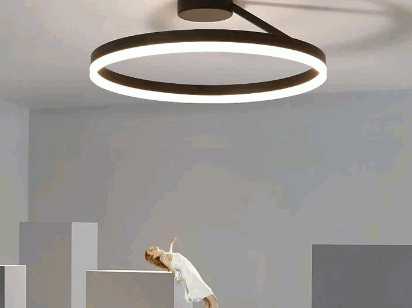
What Are LED Ceiling Lights?
LED Ceiling Lights are modern fixtures that provide energy-efficient lighting solutions for rooms. These lights come in various designs and sizes to suit different room aesthetics and lighting needs.
Regarding integrated LED ceiling lights, the LED technology is built directly into the fixture, ensuring a long lifespan and low maintenance. On the other hand, replaceable LED bulbs offer the flexibility to easily change the lighting intensity or color temperature.
It's essential to consider the size of the room when selecting LED ceiling lights to ensure proper lighting distribution and balance. Whether you prefer a sleek and minimalist look or a statement piece, there are LED fixtures available to complement any room's aesthetic.
Take a look: How To Install LED Recessed Lighting Retrofit
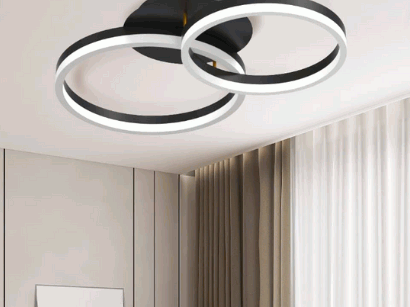
What Are The Different Types Of LED Ceiling Lights?
LED Ceiling Lights come in two main types: integrated fixtures and replaceable bulbs. Integrated LED lights are fixtures where the LEDs are built into the fixture itself, offering a sleek and modern design. On the other hand, replaceable LED bulbs allow for easy replacement and customization of the light output.
Integrated LED ceiling lights, due to their all-in-one design, eliminate the need for separate drivers or technical installations, making them hassle-free to set up. Their advanced engineering ensures optimal light distribution and enhances the ambiance of any space.
Longevity is a key advantage, with integrated LEDs often lasting significantly longer than traditional bulbs, saving on maintenance costs and reducing the need for frequent replacements. These lights are highly energy-efficient, consuming less power while providing bright illumination.
How Do LED Ceiling Lights Work?
LED Ceiling Lights work by using light-emitting diodes (LEDs) to produce illumination. These lights are designed to be energy-efficient and provide a balance of ambience and functionality in modern homes.
LED Ceiling Lights have gained popularity not just for their efficiency but also for their remarkable durability. The technology behind LEDs allows these lights to last significantly longer than traditional lighting options, reducing the need for frequent replacements and maintenance. The heat dissipation mechanism in LED ceiling lights ensures that they remain cool to the touch even after prolonged use, making them safe and ideal for various settings. This feature also contributes to their longevity and lower energy consumption, further emphasizing their sustainability.
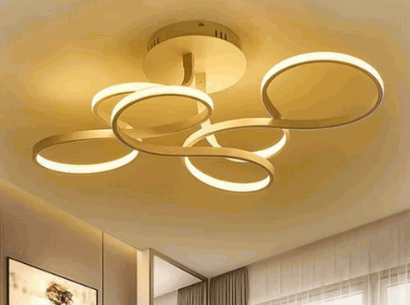
What Are The Benefits Of Using LED Ceiling Lights?
LED Ceiling Lights offer numerous benefits, including energy efficiency, long lifespan, sustainability, and cost savings. These lights are designed to reduce energy bills and provide reliable lighting solutions.
With their energy-efficient technology, LED ceiling lights consume significantly less electricity compared to traditional lighting options, making them an environmentally friendly choice. The long lifespan of LED lights means fewer replacements, reducing maintenance costs and saving you time and hassle. The sustainability of LED lights lies in their recyclability and absence of hazardous materials, contributing to a greener planet. This remarkable cost-saving attribute not only benefits your wallet but also the environment by reducing overall energy consumption.
Energy Efficiency
One of the key benefits of LED Ceiling Lights is their energy efficiency. These lights consume less power compared to traditional lighting solutions, leading to reduced energy consumption and lower electricity bills.
LED ceiling lights have a longer lifespan, which means less frequent replacements, reducing maintenance costs as well. The environmental impact of LED lights is also significant, as they produce less heat and contain no hazardous materials, making them eco-friendly options. This translates into a positive contribution towards sustainability by reducing the carbon footprint and overall energy waste. When compared to incandescent or fluorescent lighting, LED ceiling lights stand out as a more cost-effective and environmentally-conscious choice.
Long Lifespan
LED Ceiling Lights have a significantly longer lifespan compared to traditional bulbs. The average lifespan of LED lights is often expressed as the L70 rating, indicating the time taken for the light output to degrade to 70% of its original level.
One of the key benefits of this extended lifespan is the reduced frequency of replacements required, saving homeowners both time and money in the long run. LED lights are known for their durability, attributed to factors such as their solid-state construction that is less prone to breakage compared to fragile filaments in incandescent bulbs. The efficient energy usage of LEDs contributes to their longevity as they generate less heat, reducing stress on internal components and ensuring a more stable performance over time.
Environmentally Friendly
LED Ceiling Lights are environmentally friendly lighting options due to their lower energy consumption and reduced carbon footprint. These lights contribute to sustainability efforts by minimizing greenhouse gas emissions.
The longevity of LED lights plays a crucial role in reducing waste as they have a significantly longer lifespan compared to traditional lighting sources. This means less frequent replacements and ultimately less material ending up in landfills. LED lights do not contain hazardous materials like mercury, making them safer for the environment during disposal.
Cost Savings
Using LED Ceiling Lights can lead to substantial cost savings over time. While the initial investment may be higher, the long-term benefits in terms of energy savings and reduced maintenance costs make LED lights a cost-effective lighting solution.
The financial advantages of using LED ceiling lights are multifaceted. These lights are known for their energy efficiency, consuming significantly less power compared to traditional incandescent or fluorescent bulbs. This reduced energy consumption translates directly into lower electricity bills, providing users with ongoing savings. LED lights have a longer lifespan, requiring less frequent replacements and maintenance, which further reduces operating costs over time.
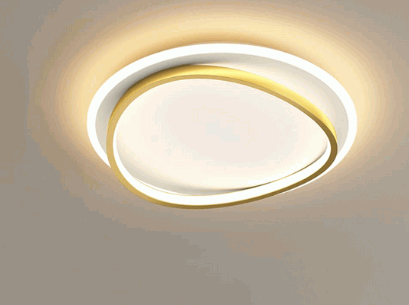
Are There Any Drawbacks To Using LED Ceiling Lights?
Despite their numerous benefits, LED Ceiling Lights also have certain drawbacks that need to be considered. These drawbacks include a potentially higher upfront cost, limited color options, and the occasional issue of flickering.
When installing LED ceiling lights in rooms with high ceilings, the initial expense can be a barrier for many homeowners. While the long-term energy savings are attractive, the upfront investment required is often more than traditional lighting options.
The color choices available with LED lights are somewhat limited compared to traditional lighting sources such as incandescent bulbs. This can be a drawback for individuals who prefer a wider range of hues to match their specific decor preferences.
Another concern that some may encounter is the occasional problem of flickering in LED ceiling lights. This issue can be frustrating and may require replacement of the fixture or professional assistance to rectify.
While LED technology has come a long way in recent years, some users still find that certain styles of LED ceiling lights do not match the aesthetic they are seeking for their space.
Higher Upfront Cost
One of the main drawbacks of LED Ceiling Lights is the higher upfront cost compared to traditional lighting options. This initial investment is offset by long-term cost savings and energy efficiency benefits.
LED ceiling lights may require a higher initial outlay, but their cost-effectiveness over time cannot be overlooked. In terms of appliance longevity, LEDs outshine their traditional counterparts by a long shot, offering exceptional durability and reliability. This means fewer instances of replacement and maintenance, translating to reduced expenses in the long run. While the upfront costs may dissuade some buyers initially, the durability of LED lights ensures that the investment pays off in the form of extended lifespan and decreased energy consumption.
Limited Color Options
LED Ceiling Lights may have limited color options compared to traditional lighting sources. While LEDs offer a wide range of color temperatures, customization options for specific hues or tones might be restricted.
When considering LED ceiling lights, it's essential to delve into the available color temperatures to ensure the desired ambiance is achieved. The measurements and dimensions of a room also play a crucial role in determining which color temperature is suitable. While customization possibilities for color hues may be constrained, the impact on room aesthetics can still be significant. Aesthetics are influenced not only by the color temperature but also by the distribution of light and the design of the fixture itself.
Potential For Flickering
One drawback of LED Ceiling Lights is the potential for flickering, which can be due to issues with the driver or incompatible dimmer switches. Addressing this concern often requires technical troubleshooting to ensure a stable lighting performance.
Flickering in LED ceiling lights can disrupt the balance and ambience of a room, affecting both functionality and aesthetics. Common causes of flickering include improper wiring, voltage fluctuations, or a mismatch between the dimmer switch and the LED fixture. To tackle this issue, it's essential to check for loose connections, replace faulty components, or consider using a compatible dimmer switch.
Proper installation of LED ceiling lights, such as ensuring a secure flush mount, is crucial to prevent flickering issues. Regular maintenance, like cleaning dust off the fixture and checking for any signs of wear, can also help maintain optimal performance.
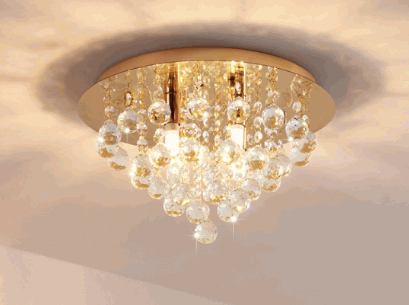
How Do LED Ceiling Lights Compare To Other Types Of Lighting?
When compared to other types of lighting such as incandescent, CFL, and halogen lights, LED Ceiling Lights stand out for their energy efficiency, longevity, and overall performance. These lights offer a balance of functionality and aesthetics in modern homes.
One of the key advantages of LED ceiling lights is their minimal energy consumption, making them an excellent choice for those looking to reduce electricity bills and minimize their environmental impact.
These lights are known for their superior durability, requiring less frequent replacement compared to traditional lighting options. Moreover, LED fixtures are designed to efficiently dissipate heat, ensuring a longer lifespan and maintaining a cool environment.
The design versatility of LED ceiling lights allows for various shapes, sizes, and color temperatures, enabling homeowners to customize their lighting preferences to suit different spaces and moods.
Incandescent Lights
In comparison to incandescent lights, LED Ceiling Lights are far more energy-efficient and have a significantly longer lifespan. While incandescent lights may offer a warmer color tone, LED lights excel in terms of sustainability and reduced energy consumption.
LED lights not only save on energy costs but also contribute to environmental preservation. The efficiency of LED technology translates into cost savings over the long term, making them a smart investment for households and businesses alike. LEDs are also known for their dimmability, providing users the flexibility to adjust lighting levels according to their preferences and needs.
One of the key factors that differentiate LED and incandescent lights is their color temperature. LED lights can offer a range of color temperatures, from warm to cool hues, allowing users to create different atmospheres and moods with their lighting choices. On the other hand, incandescent lights tend to emit a consistently warm color, which may not be suitable for all environments.
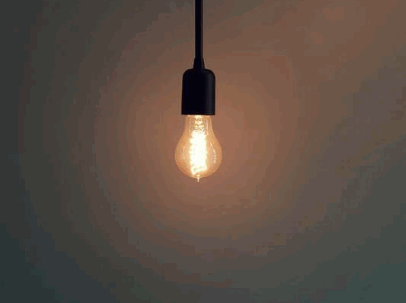
CFL Lights
Compared to CFL lights, LED Ceiling Lights are more energy-efficient, contain no mercury, and offer a wider range of color temperatures. LED lights also have instant brightness without any warm-up time, making them a preferred choice for many consumers.
LED lights typically have a longer lifespan than CFL lights, providing up to 50,000 hours of illumination compared to CFLs which last around 10,000 hours. LEDs are more durable because they are made of solid material and are less prone to breakage, making them ideal for various environments.
Regarding brightness, LEDs emit light in a specific direction, thanks to their narrow beam angle, which helps in directing light exactly where it's needed, reducing wasted light. The range of lumens offered by LED lights allows for greater customization in terms of brightness levels, catering to individual preferences and requirements.
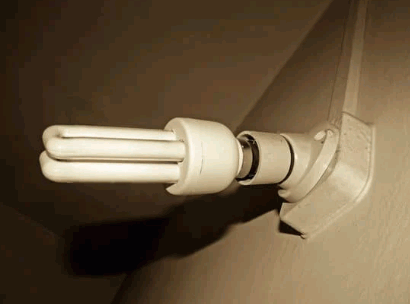
Halogen Lights
When contrasted with halogen lights, LED Ceiling Lights offer superior energy efficiency, longer lifespan, and better light quality. Halogen lights are known for their heat output and higher energy consumption, making LED lights a more sustainable and cost-effective choice.
LED ceiling lights also have a wider range of brightness options and can be dimmed efficiently, providing adjustable lighting to suit various preferences and moods. The beam angle of LED lights is typically broader, ensuring more uniform illumination across a room compared to the directional light of halogen bulbs. LED ceiling lights are renowned for their durability and shock resistance, making them ideal for long-term use without the need for frequent replacements.
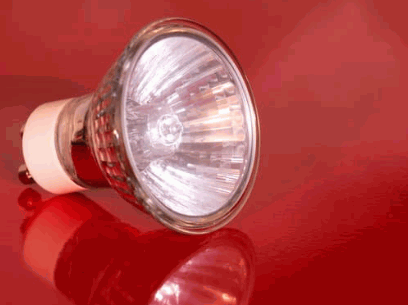
What Factors Should Be Considered When Choosing LED Ceiling Lights?
Several factors should be considered when selecting LED Ceiling Lights for a space. These include lumens and brightness levels, color temperature preferences, dimmability options, and the beam angle required for adequate lighting coverage.
When choosing LED ceiling lights, it's crucial to pay attention to the color temperature to create the desired ambiance. Whether you prefer warm or cool tones, selecting the right color temperature can significantly impact the overall mood of the room. Considering the dimmability of the lights allows for adjusting the intensity to suit different occasions or activities. The beam angle plays a vital role in determining the coverage area and focus of the lighting, ensuring efficient illumination across the space.
Lumens And Brightness
The brightness of LED Ceiling Lights is measured in lumens, which indicate the light output of the fixture. Understanding the lumens required for a specific room size helps in selecting the appropriate lighting level for optimal illumination.
When choosing LED ceiling lights, it's essential to consider the room size to ensure proper brightness levels. Different rooms have varying lighting needs - for example, a small bedroom may require fewer lumens than a large living room.
Ensuring the right amount of lumens not only impacts the brightness but also the overall ambiance of the space. LED lights with higher lumens provide a brighter light, creating a more inviting and well-lit environment.
Color Temperature
Color temperature plays a crucial role in the ambiance of a room. LED Ceiling Lights offer a range of color temperatures from warm white to cool daylight, allowing users to customize the lighting ambiance based on their preferences.
Choosing the right color temperature can significantly impact the overall aesthetics of a space. Warm white tones create a cozy and inviting atmosphere, perfect for living rooms and bedrooms, while cooler daylight hues are ideal for task-oriented areas such as kitchens and home offices.
Aesthetically, achieving a proper balance of lighting tones is key in creating a harmonious and visually appealing environment, especially in modern homes. LED lights, with their flexibility in color temperature settings, provide a versatile solution for achieving this desired balance.
Dimmability
Dimmable LED Ceiling Lights provide users with the flexibility to adjust the light intensity based on the desired ambiance. Incorporating dimmable features in LED lights enhances the overall functionality and mood-setting capabilities of the fixtures.
Users appreciate the ability to create different atmospheres in their living spaces without having to rely on fixed lighting levels. Whether you want soft, ambient lighting for a cozy evening at home or bright, focused illumination for reading or working, dimmable LED ceiling lights offer a versatile solution. This not only adds a touch of personalization to the environment but also contributes to energy savings by allowing users to adjust the brightness according to their needs. The dimmable feature significantly impacts the overall ambience of a room by allowing for customization based on specific preferences.
Beam Angle
The beam angle of LED Ceiling Lights determines the spread of light and coverage area. Selecting the appropriate beam angle ensures uniform illumination across the room, making it essential to consider the desired light distribution for optimal lighting results.
With a narrow beam angle, the light is focused in a specific direction, making it ideal for accent lighting or highlighting certain features in a room. On the other hand, a wide beam angle spreads the light over a larger area, perfect for general ambient lighting. The angle of the beam also affects the visual perception of space; a tight beam angle can create dramatic shadows and highlights, while a wider beam angle offers a more even and well-lit environment.


